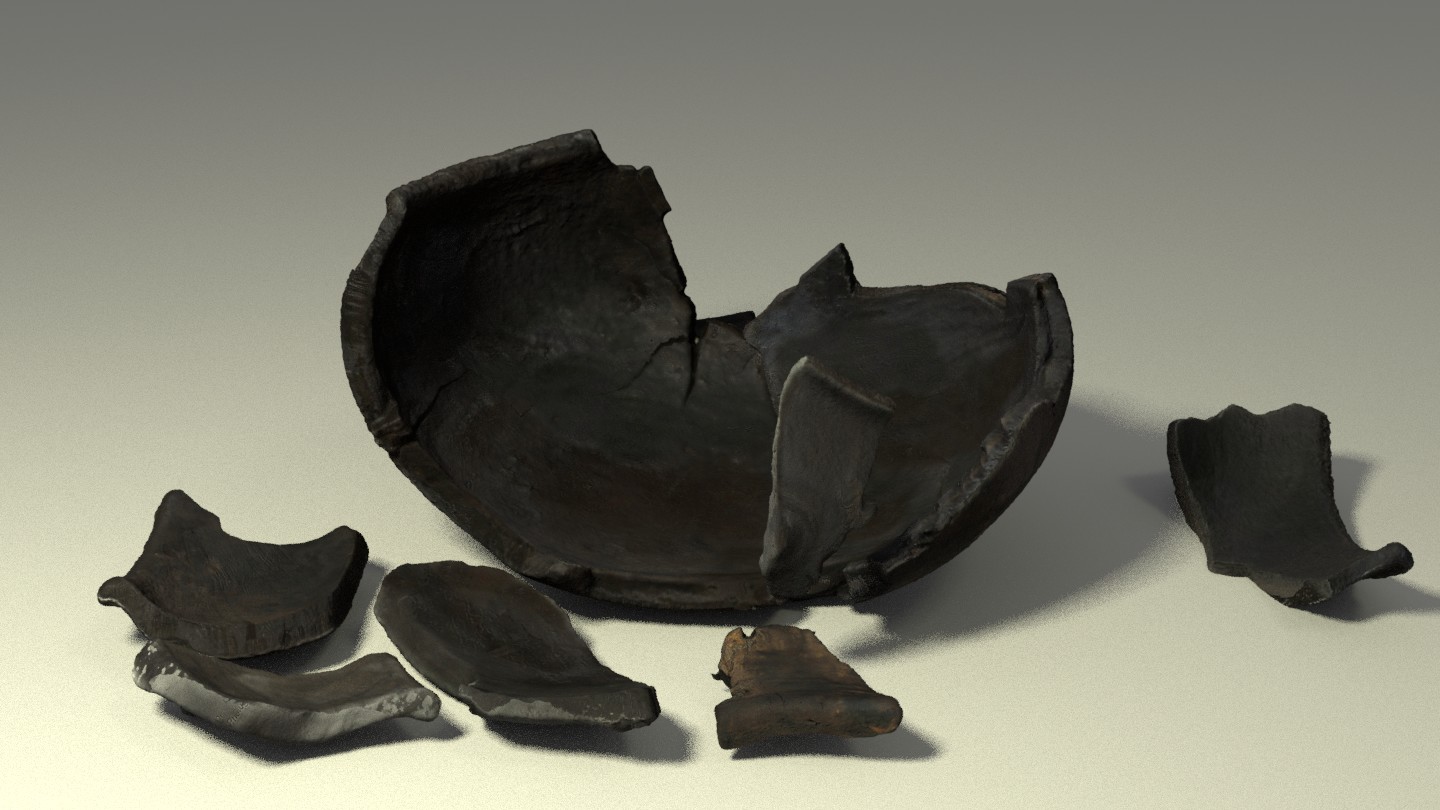Since 2006, UHI Archaeology Institute has been carrying out archaeological excavations at The Cairns on South Ronaldsay, Orkney. Part of a wider archaeological research project investigating the later prehistory of the landscape around Windwick, their work now focuses on the substantial Iron Age broch and its surrounding settlement.
In 2018, work at the broch uncovered an astonishing Iron Age survival: a wooden bowl, preserved in waterlogged conditions within a two-metre-deep, rock-cut, subterranean structure, complete with a flight of stone stairs. These structures are usually described as wells, though their function is not clear.
Wooden artefacts rarely survive in archaeological contexts, so the significance of the bowl was recognised from the outset. It was block-lifted, meaning that it was excavated within a block of the archaeological deposits that surrounded it, ensuring that it was supported throughout its removal from the ground.
The block was transported to the conservation lab, where it was micro-excavated. It then underwent a range of specialist analyses to discover more about the bowl, its construction and its use.
Lab Excavation
The bowl was carefully micro-excavated by AOC’s conservators under lab conditions: the soil was removed and the bowl fragments recorded as they were lifted from the block. This helps in reconstructing the original form of the bowl, since we know the exact position of each fragment. It also allows any associated finds to be identified and recorded.
Micro-excavation in the lab
A scar from the handle reveled during conservation work
Conservation of the bowl
Waterlogged wood artefacts require careful conservation to ensure their long-term survival following removal from the ground.
After micro-excavation, each fragment of the bowl was gently washed from soil residue revealing smooth burnished interior, tool marks on the interior surfaces and a scar where a handle once protruded.
The next conservation steps include consolidation in polyethylene glycol (PEG), followed by vacuum freezedrying.
A Finely Made Possession
Despite being broken into many pieces, around 90% of the bowl survives. Analysis has revealed that the bowl was made from an alder log, finely carved, with a very smooth finish on the outside. It was probably burnished, possibly with sand or shavings, to give a polished appearance.
The interior is covered in short grooves, traces of the carver’s tools as they hollowed out the vessel. The grooves change direction, showing where the carver repositioned the bowl during work.
Dry reconstruction revealed the completeness of the bowl
3D-printed replica of the bowl
Digital Recording
Each of the fragments of the bowl got recorded using phtotorammetry. This resulted in an accurate 3D record, allowing us to create a digital reconstruction of the bowl, giving the specialist a complete view of the aferact, before conservation works were completed.
The 3D data was then used by Orkney 3D to create a physical replica of the bowl .
Reduce, Reuse, Recycle
The bowl from The Cairns has evidence of numerous repairs, suggesting it was much used and much loved.
Evidence of ancient repairs were found during conservation works. It was difficult to assess the extent of previous repairs with the naked eye, so the bowl was X-rayed which revealed multiple copper alloy zig-zag rivets, a large staple, and a rim mount. This allowed to locate the joints between the bowl’s loose fragments.
These numerous repairs leave no doubt that the bowl was a prized possession, considered worthy of mending to prolong its useful life.
X-ray of the bowl showing wavy rivets and the staple
Residue on one of the bowl sherds
Deposits and Residue Analysis
The soil deposits lifted along with the vessel were carefully wet sieved, allowing for retrieval of any other artefacts or ecofacts contained with the block.
AOC analysed the material, identifying burdock, bracken, heather, mosses and common chickweed as well as leaf, wood and bark fragments, helping paint a picture of the landscape of The Cairns at the time the bowl was deposited. The bowl itself contained brushwood, though it isn’t clear whether this was within the bowl when it was deposited in the well, or whether it made its way in later on.
Analysis of residues around the rivets identified animal fats including likely tallow (rendered animal fat often used in candles/lamps).
The residue in the base of the bowl may represent a dairy product – perhaps milk, butter or cheese from cattle, sheep or goat. Perhaps the bowl was used to process, store or serve dairy products.



